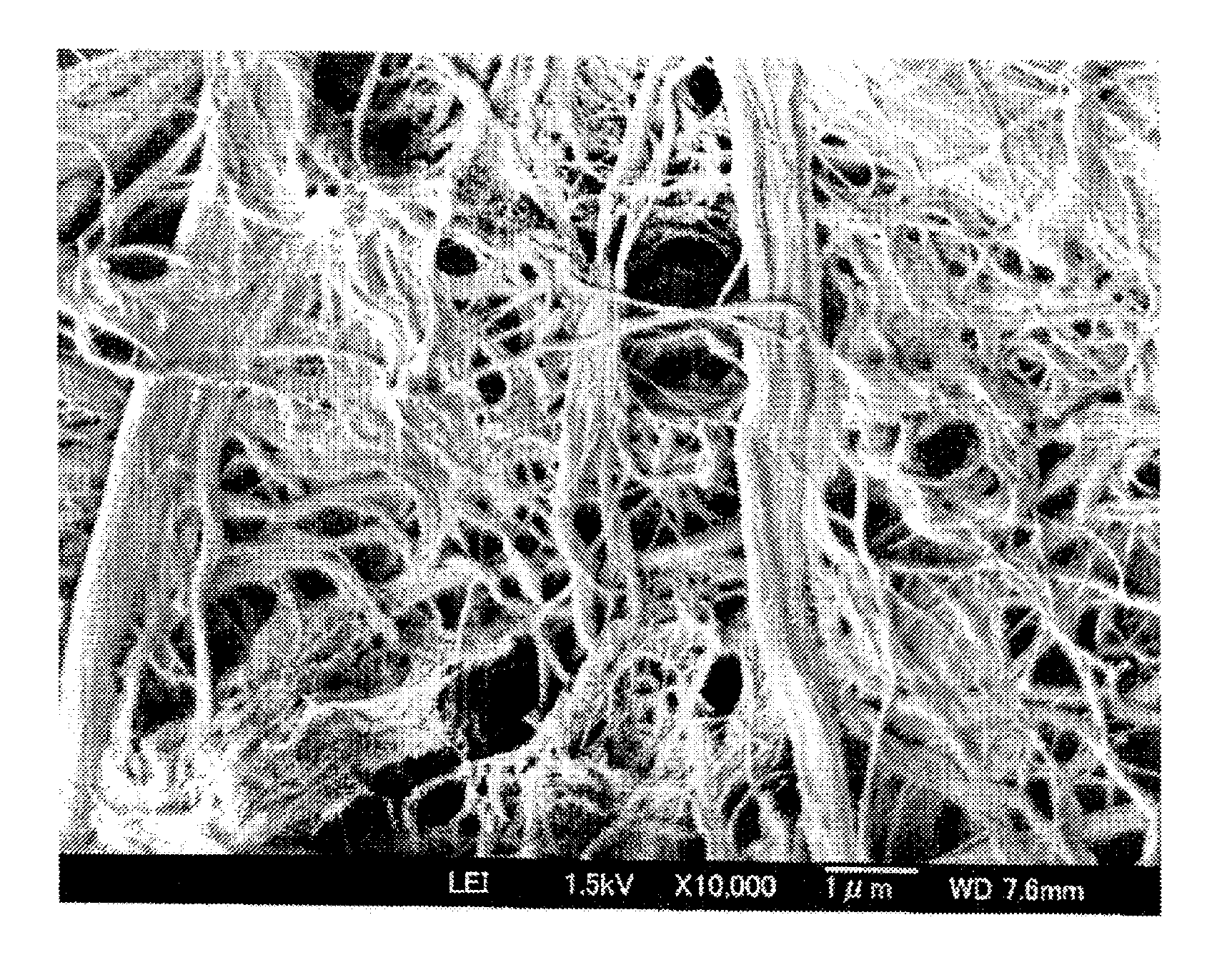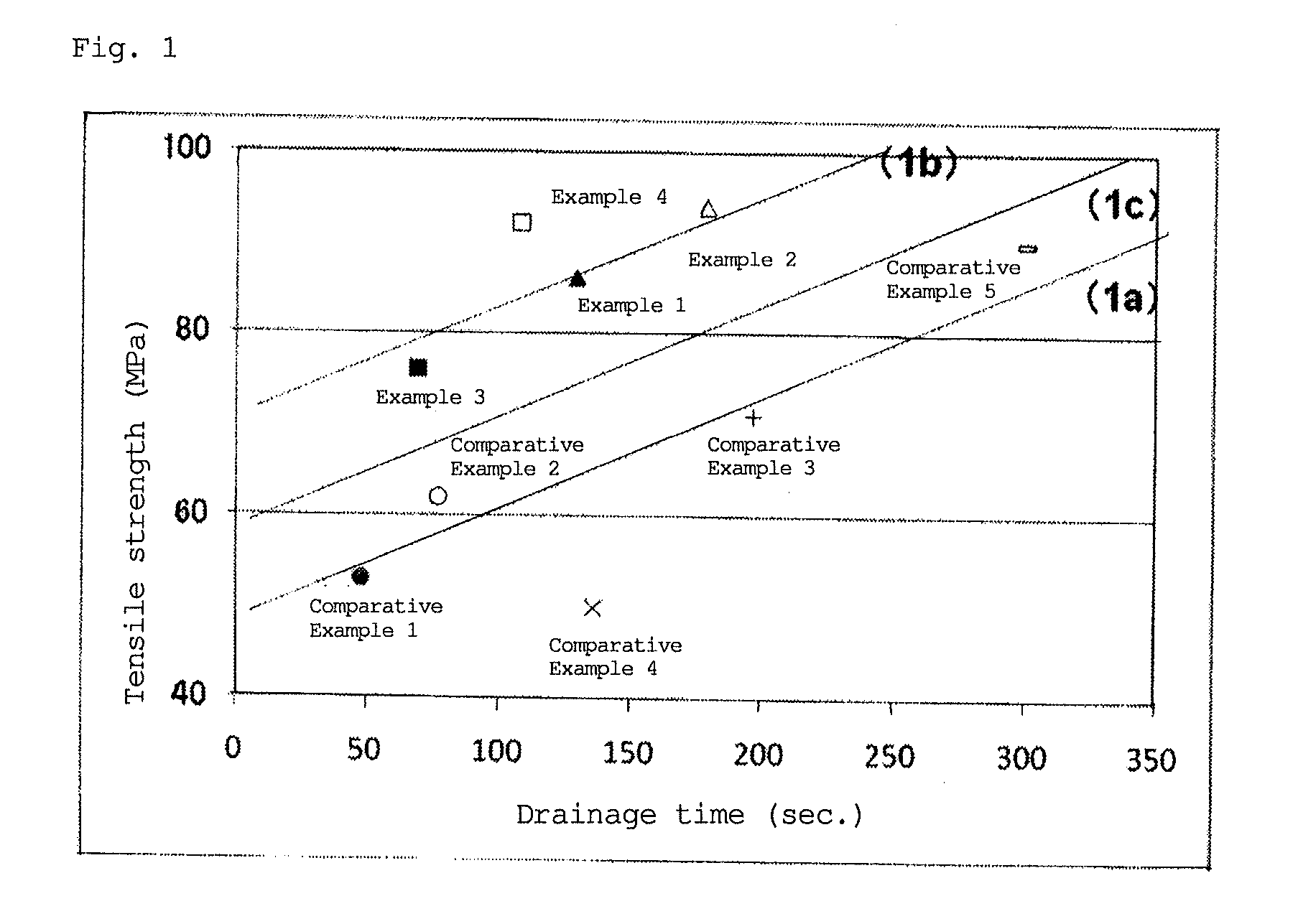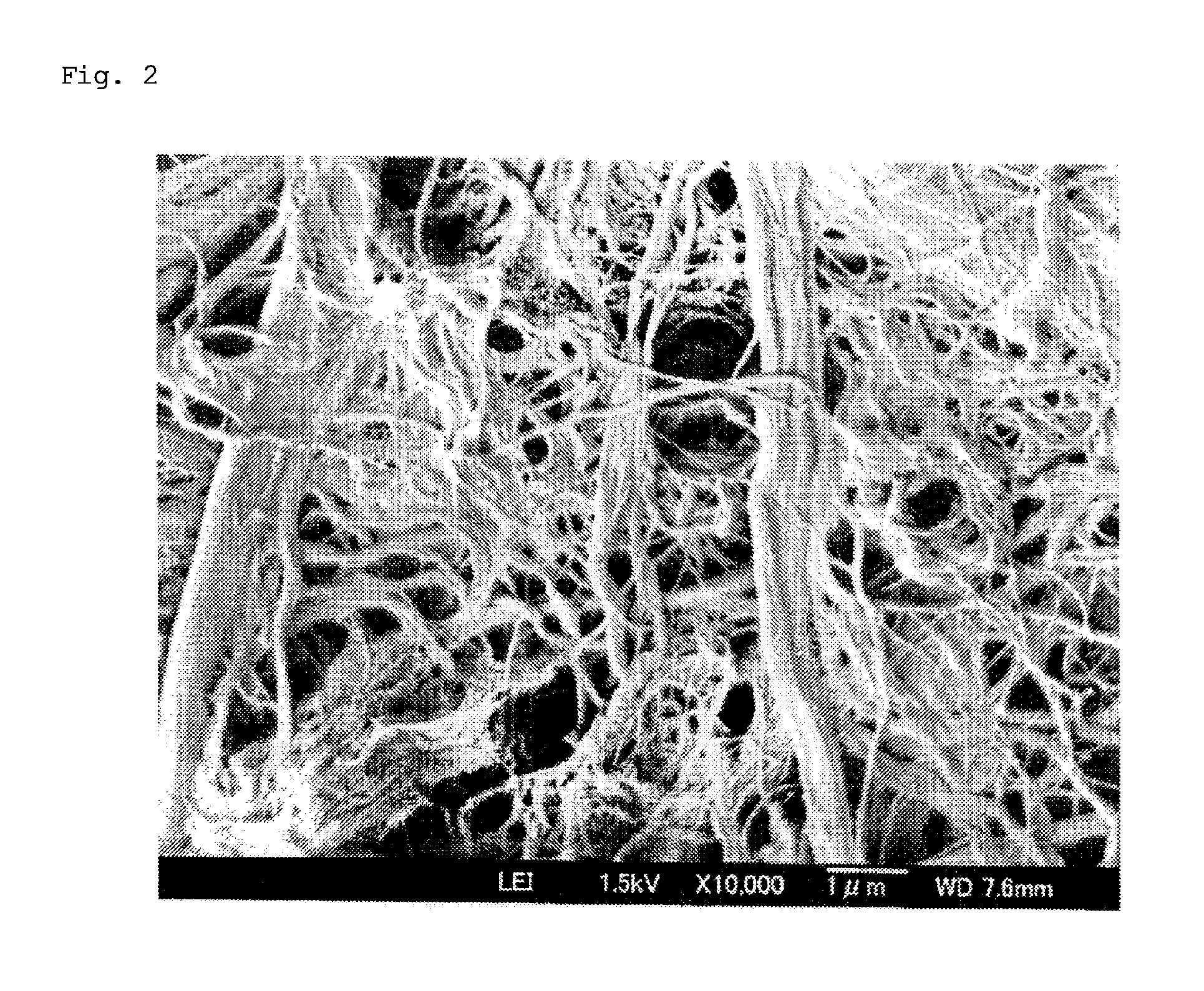Cellulose nanofibers
- Summary
- Abstract
- Description
- Claims
- Application Information
AI Technical Summary
Benefits of technology
Problems solved by technology
Method used
Image
Examples
example 2
[0115]A sheet was produced in the same manner as in Example 1, except that the number of times defibration treatment was performed was changed to four times (4 passes). Table 1 shows the physical property values of the obtained sheet.
example 3
[0116]A sheet was produced in the same manner as in Example 1, except that softwood bleached kraft pulp (NBKP) was used as the pulp instead of softwood unbleached kraft pulp (NUKP). Table 1 shows the physical property values of the obtained sheet.
example 4
[0117]A sheet was produced in the same manner as in Example 3, except that the number of times defibration treatment was performed was changed to four times (4 passes). Table 1 shows the physical property values of the obtained sheet.
PUM
| Property | Measurement | Unit |
|---|---|---|
| Temperature | aaaaa | aaaaa |
| Length | aaaaa | aaaaa |
| Pressure | aaaaa | aaaaa |
Abstract
Description
Claims
Application Information
 Login to View More
Login to View More - R&D
- Intellectual Property
- Life Sciences
- Materials
- Tech Scout
- Unparalleled Data Quality
- Higher Quality Content
- 60% Fewer Hallucinations
Browse by: Latest US Patents, China's latest patents, Technical Efficacy Thesaurus, Application Domain, Technology Topic, Popular Technical Reports.
© 2025 PatSnap. All rights reserved.Legal|Privacy policy|Modern Slavery Act Transparency Statement|Sitemap|About US| Contact US: help@patsnap.com



